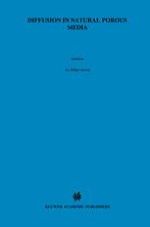1998 | OriginalPaper | Buchkapitel
Dissolution of Nonaqueous Phase Liquids
verfasst von : Peter Grathwohl
Erschienen in: Diffusion in Natural Porous Media
Verlag: Springer US
Enthalten in: Professional Book Archive
Aktivieren Sie unsere intelligente Suche, um passende Fachinhalte oder Patente zu finden.
Wählen Sie Textabschnitte aus um mit Künstlicher Intelligenz passenden Patente zu finden. powered by
Markieren Sie Textabschnitte, um KI-gestützt weitere passende Inhalte zu finden. powered by
Organic contaminants may occur in the subsurface as nonaqueous phase liquids (NAPL), which form pools or are trapped in the porous media as blobs or ganglia. The following chapter addresses the mass transfer processes which control the release of organic compounds from NAPLs and multicomponent NAPL mixtures such as coal tar or creosote. The mass transfer into the aqueous phase depends on the compound’s water solubility and molecular diffusivity. Since the water solubility is a key parameter in the dissolution kinetics of NAPL this issue is discussed briefly in Section 5.1. The dissolution kinetics of organic contaminants from residual phase liquids (“blobs”) trapped in granular porous media is discussed based on Fick’s 1st law (film diffusion, Section 5.2). Fick’s 2nd law is needed in order to calculate the pollutant mass transfer rates from pools of liquid contaminants floating on the groundwater table (light nonaqueous phase liquids: LNAPL) or ponding on low permeability layers in the aquifer (dense nonaqueous phase liquids: DNAPL).
